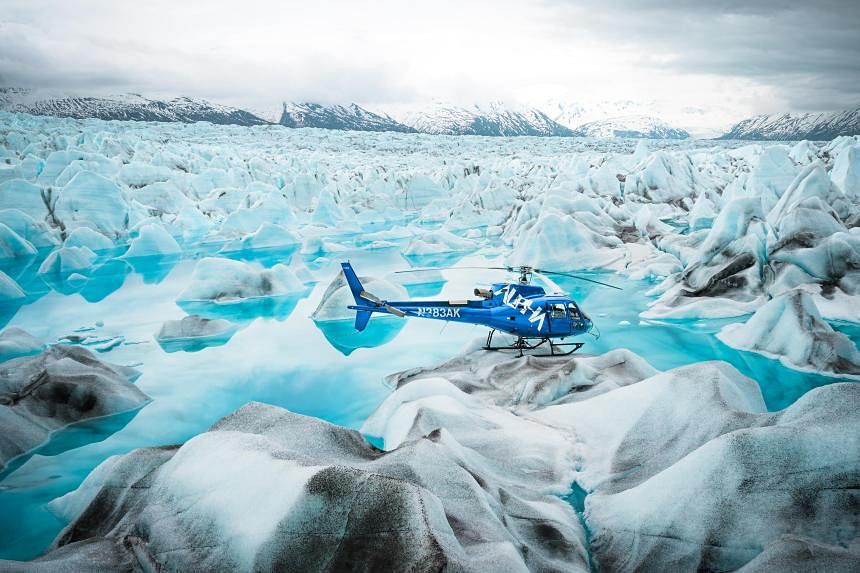ANCHORAGE – When you scroll through lists of the top 20 or even 30 cities in the United States most visited by tourists, foreign or domestic, one place you never see is Anchorage.
This is no doubt because of its isolated location, but the upside is that the largest city in Alaska is therefore a grossly underrated gem that deserves to be on every traveller’s bucket list.
The reasons are many, but chief among them are outrageously beautiful glaciers, which you can explore on foot or by helicopter; encounters with fantastic beasts including adorable sled dogs and majestic musk oxen; and the excellent odds of spotting the aurora borealis, or northern lights, if you go at the right time of year.
And all this is highly accessible from Anchorage itself, which also serves as an introduction to the singular character of Alaska, whose residents are known for their rugged individualism, eccentricity and warmth.
I had, years ago, briefly stopped in Anchorage en route to Fairbanks – an Alaskan city just outside the Arctic Circle – on another spectacular dog-sledding, aurora-viewing trip via Alaska Railroad’s winter train service, another traveller’s dream.
But on my second, longer trip to Anchorage earlier in 2023, I was blown away by the sheer number of once-in-a-lifetime experiences on offer, which cater to families and adventure travellers alike.
I have hiked on and close to glaciers before, in Iceland and Antarctica, but the two that lie within striking distance of Anchorage trump them in ease of access and safety – and you will likely come away with better pictures too.
The best way to see the Knik Glacier, an ice field about an hour’s drive from Anchorage, is with Alaska Helicopter Tours (alaskahelicoptertours.com), whose excursions are nothing short of cinematic.
A 60-minute Knik Glacier tour, which includes 30 minutes of flight time, costs US$409 (S$558) for adults and US$359 for children aged two to 11.
In a tiny four- or six-seater aircraft, you take off for a thrill ride across surreal topography – close enough to the ground to see people on the glacial bed, but high enough to appreciate the icy blue-grey cliffs that tower over it.
After the short flight, you land on a section of the glacier and can prance around in the snow.
But if you think “once you’ve seen one glacier, you’ve seen them all”, a separate excursion to the Matanuska Glacier – the largest you can drive right up to and then walk on in the US – quickly changes your mind.
A glacier tour, which will take 1½ to two hours, mostly on foot, costs US$150 a person with Matanuska Glacier Tours (glacier-tours.com).
It uses a snowmobile to get you closer to the action and then guides you on a hike that, if you know Superman lore, is exactly how I picture the Fortress of Solitude, the Man Of Steel’s remote pied-a-terre.
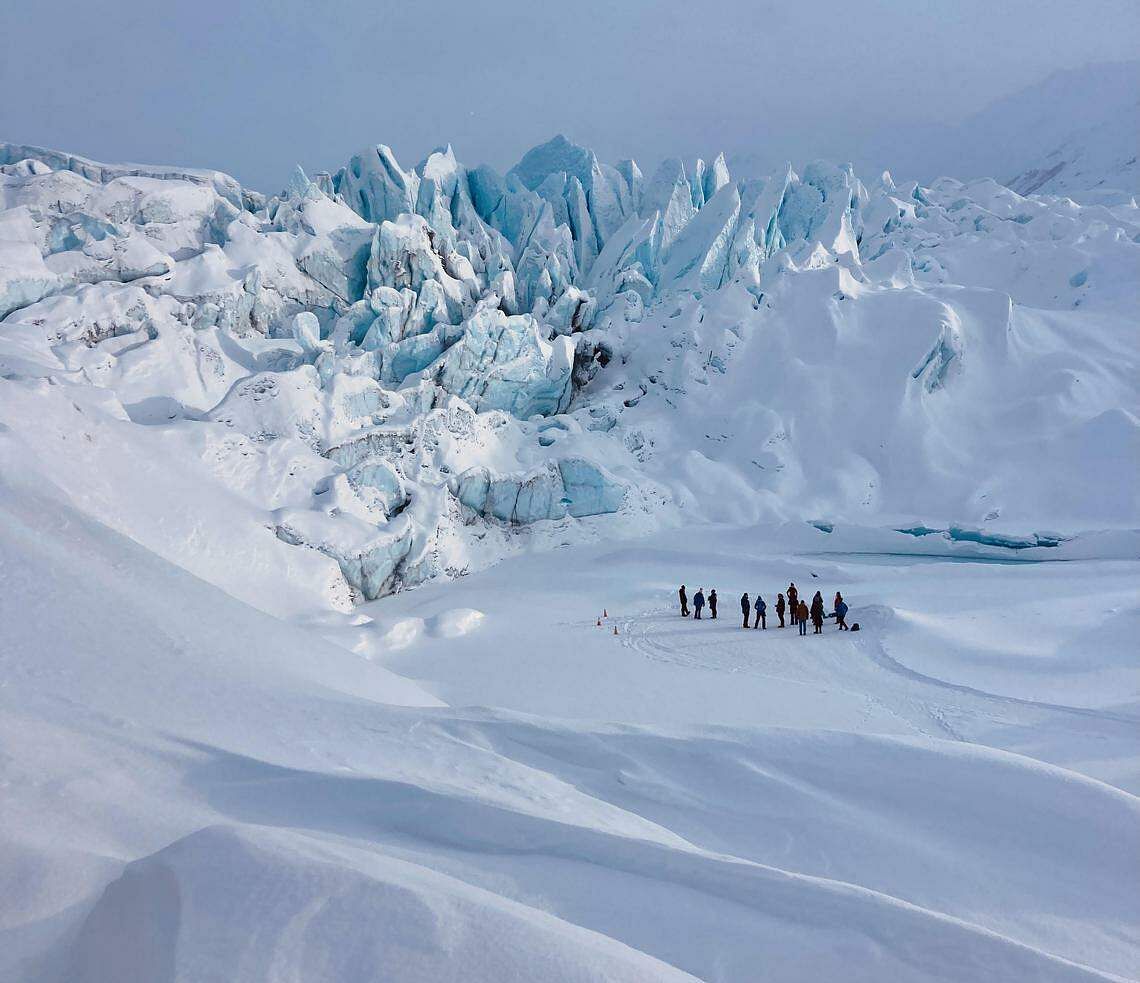
Here, you can squeeze your body through a thrillingly narrow slot canyon in the ice; explore caves of dense grey-black ice; and get on your butt to glide down a natural ice slide.
Either of these glaciers would be a trip-making moment, but if you are a dog lover or an animal enthusiast in general, Alaska is in a league of its own.
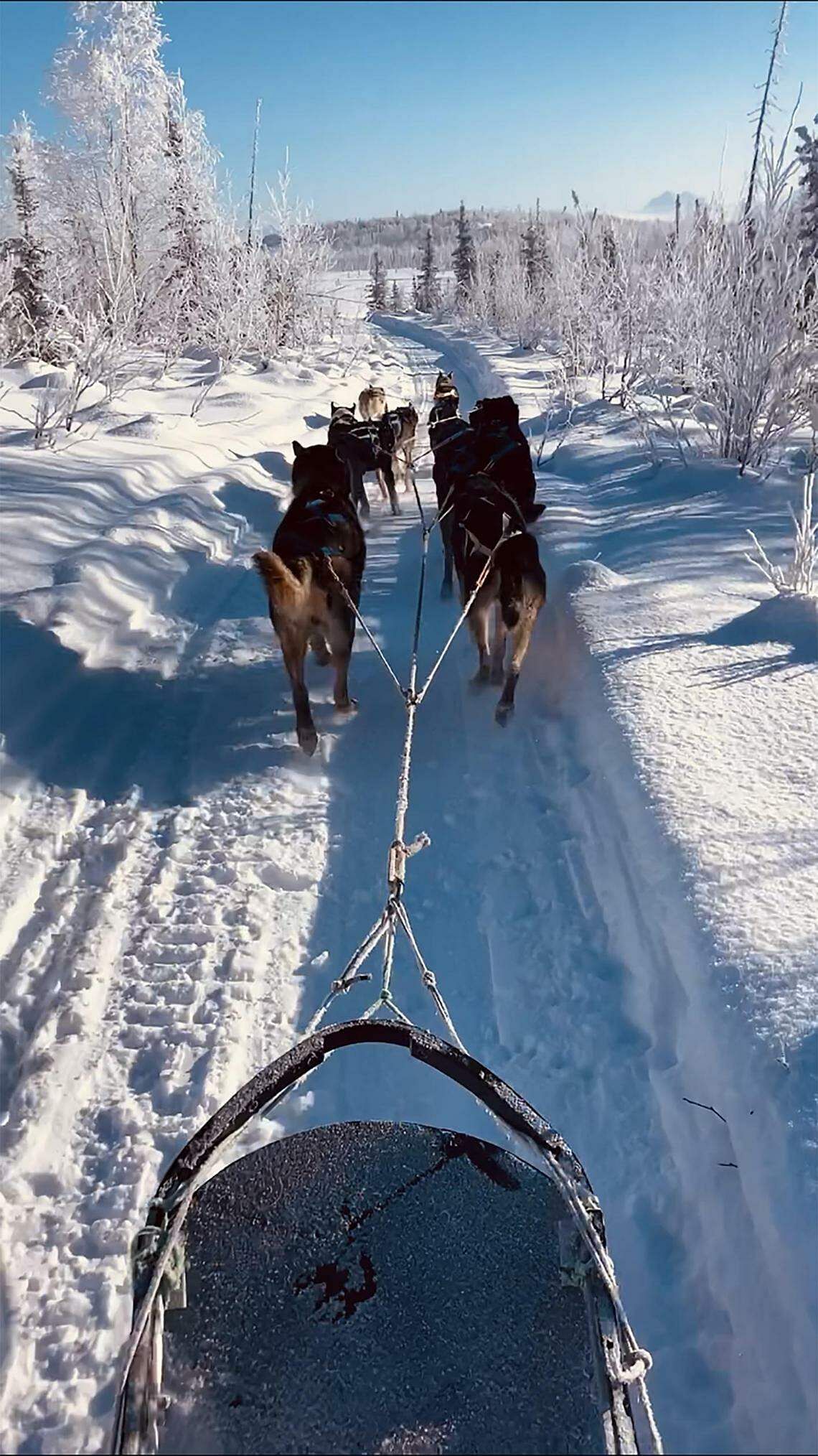
I had done dog-sledding before, in Fairbanks, but the Alaska Mushing School (www.alaskamushingschool.com) near Anchorage is a class act.
Its tours – US$169 a person for a 1½ hour, 10km dog-sledding experience – are launched from a kennel owned by Mr Martin Buser, a four-time champion of the Iditarod, the famously gruelling 1,500km Alaskan sled dog race.
Mushers, or dog-sled drivers – many of them former Iditarod racers – make sure you are kitted out properly so you do not turn into an icicle, which is alarmingly easy to do when you are being whisked across a pristine snowscape by a team of enthusiastic canines.
And these are pretty special dogs.
A mix of breeds such as Alaskan malamutes and Siberian huskies, these working animals basically moonlight as world-class endurance athletes when they compete in the Iditarod, where they cover vast distances across challenging terrain daily for up to two weeks in frigid conditions.
But, unlike many working dogs, they are not all business. Many demand cuddles from you before and after your sled ride.
My March trip happened to coincide with 2023’s Iditarod – another great excuse to visit Anchorage – where the race begins to great fanfare, and many fun and quirky events.
I bumped into 2022’s winner Brent Sass as we were staying at the same hotel, and he and his gorgeous pups – housed in a mobile kennel in the carpark – graciously entertained questions and head scratches from curious onlookers like myself.
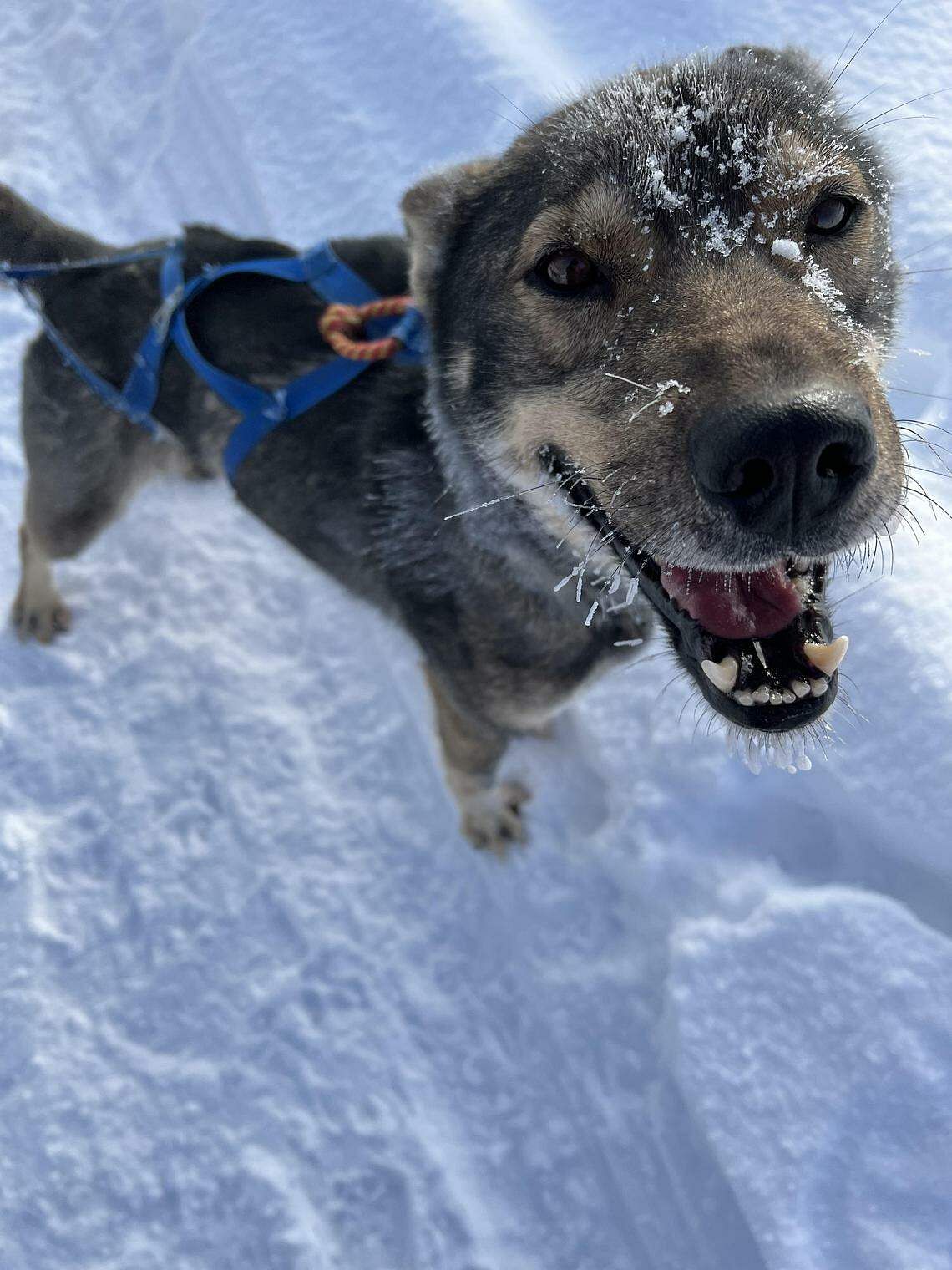
A few minutes spent with these lovely and clearly well-cared-for creatures, and you are suddenly invested in the outcome of the race, which you can follow online.
And you can meet Mr Sass and some of his dogs if you do one of the Arctic expeditions or other experiences offered at Wild and Free Mushing (wildandfreealaska.com, based not near Anchorage but closer to Fairbanks; e-mail the company for pricing).
For animal lovers who want that oxytocin hit, but with less adrenaline, there are two other terrific tours.
At Reindeer Farm (reindeerfarm.com), you can pet and feed not just reindeer (which are surprisingly soft to the touch), but also absurdly cute Scottish Highland cows, alpacas and Lucy the Moose – an orphan who is one of the few moose in captivity.
There is also a Tibetan yak, bison and a food-stealing kunekune pig that you cannot pet, but can admire from a safe distance. A one-hour guided winter tour is US$18 for adults and US$16 for kids aged three to 11.

But the most charismatic creatures in the state might be the ones at Musk Ox Farm, a visit to which feels like stepping into a time machine to the last ice age when musk oxen, which are related to cattle and bison, roamed the earth along with woolly mammoths. A one-hour guided tour at the farm is US$14 for adults and US$8 for children aged five to 17.
One of the few living things that not only survives but also thrives in Arctic conditions, the musk ox’s inner layer of fur, qiviut, is one of the warmest, softest and most luxurious natural fibres on the planet.
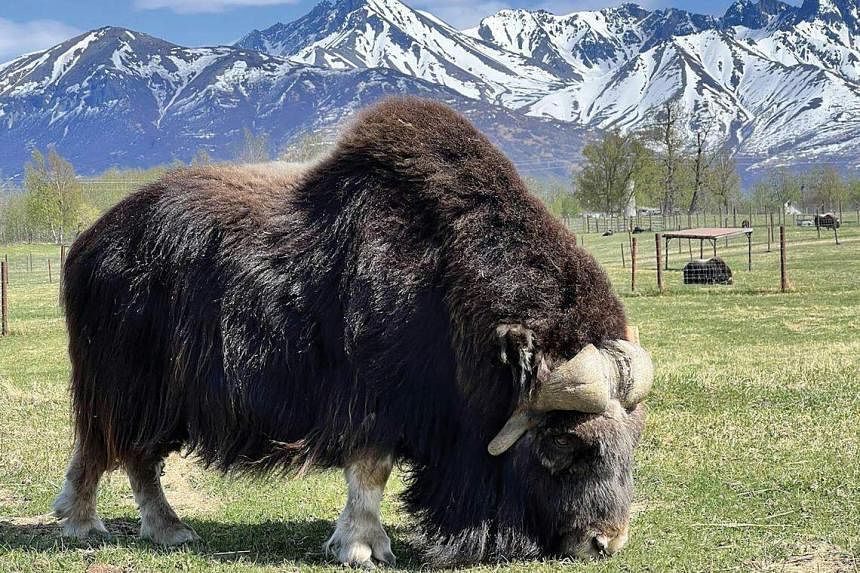
And, because of the difficulty in harvesting it, the material is also one of the world’s most expensive, as the eye-watering prices in the gift shop (US$220 or S$300 for a 100 per cent qiviut beanie hat) attest.
But nothing will keep you warmer in extreme cold, said our guide – and seeing these shaggy beasts with soulful eyes come alive and playfully charge at one another on a minus 16 deg C day, you can believe it.
Yes, visiting Alaska in March is often bitterly cold, but entirely manageable if you are sensibly dressed and take the proper precautions when getting around.
Such temperatures are also par for the course if you want to come at the best time for the aurora.
My trip saw a period of high auroral activity, and the northern lights put on almost nightly displays that were visible even from the edges of downtown Anchorage, or from the hilly suburb of Glen Alps close by.
Glen Alps is also the perfect spot to try snowshoeing for the first time, with the beginners’ tours offered by Go Hike Alaska (gohikealaska.com) taking you through scenery that will make you feel like you are inside a snow globe. A three-hour beginners’ snowshoeing experience costs US$99 a person.
For the novice, snowshoeing is going to be fairly awkward – you are effectively strapping tennis rackets to your feet.
But it is great fun and will put a flush in your cheeks, and the area has unparalleled views of major Alaskan mountain ranges such as the Chugach and, on a clear day, even Mount Denali, the tallest peak in North America.
Our group would have done a flight tour of Denali – yet another outstanding day trip available from Anchorage – if not for inclement weather.
But with so many exceptional experiences already in the memory bank, not one person complained.
Getting there
There are no direct flights from Singapore to Anchorage, but you can connect through Los Angeles, San Francisco or Seattle, and from there, catch a non-stop to Anchorage. There are no non-stop flights from the East Coast of the United States.
I flew on Delta Airlines through Los Angeles, which, for airport-lounge aficionados, has one of the newest, swankiest premium lounges in the US: the Delta Sky Club at Terminal 3.
It boasts an outdoor deck with sweeping views of the runway; chic mid-century-style phone booths for quiet work; and a show-stopping coffee alcove with sparkling Italian pink glass tiles.
Where to stay
In Anchorage, stay at The Lakefront Anchorage (str.sg/iGCF) on the shore of Lake Spenard, which has stunning views of the lake and Chugach Mountains.
From the hotel, you can watch float planes take off and land and, if you are lucky, a gigantic moose – taller than a small tour bus – stroll up and casually munch on a tree.
A deluxe room for March 2024 is now priced from US$247 a night.
What to eat
The cold works up an appetite, but there are many places to satisfy it, including Turkey Red (turkeyredak.com) in the town of Palmer, en route to Knik Glacier, where the crowd-pleasing menu favours locally sourced ingredients. A hearty beef or fish stew with a warming red is just the ticket after a glacier hike.
Another option is the restaurant at Sheep Mountain Lodge, which also prioritises seasonal local produce from farmers in Palmer, and has cosy cabins overlooking the Matanuska River Valley. The classic cabins are priced from US$169 to US$239, depending on the season.
Alaskan seafood is exceptional, so keep an eye out for whatever is in season, especially Alaskan wild salmon, which is almost ruby-red in hue and possibly the best salmon you will ever have.
Travel tips
- Temperatures averaged minus 16 deg C during my March trip. If you are not used to such weather, take some time to learn how to dress appropriately, which will mean wearing several layers of technical winter clothing, especially if you plan to go hiking or dog-sledding.
- Ice cleats – a contraption worn over shoes or boots for added traction – are a very good idea.
- If you are not used to driving on snowy, icy roads, book a tour or use a ride-share service. If you rent a car, make sure you reserve, in advance, one with four- or all-wheel drive and, ideally, heated seats and a heated steering wheel.
- In Quest Of is a series on the joy of niche exploration. This story on Anchorage is the second instalment of Alison de Souza’s four-part series exploring the changing face of the United States and destinations off the usual tourist track. Next week: San Francisco, gateway to West Coast road trips.
- The writer’s trip was facilitated by the United States Embassy in Singapore and hosted by Visit Anchorage, the Go West Summit tourism convention and Delta Airlines.
